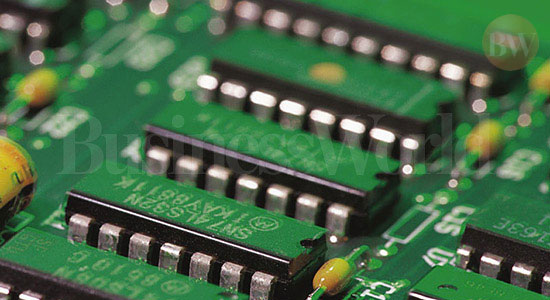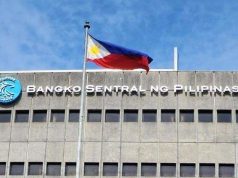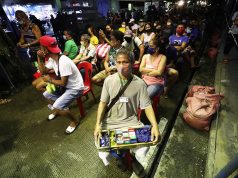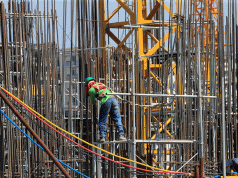MANILA – Philippine exports weathered a slowdown in external demand in June to register a strong first semester performance reflecting growth of 14%, Trade Secretary Ramon Lopez reported Thursday.
“We always ensure that exports are both resilient and diversified in terms of products and markets,” the Department of Trade and Industry chief said.
Total merchandise exports for the period January to June 2017 stood at USD31.04 billion, expanding by 14% over the USD27.33 billion posted during the same period in 2016.
The expansion is seen almost among all the country’s major export markets, with the People’s Republic of China (including Hong Kong SAR) as the country’s top export destination, followed by Japan and the United States, according to him.
Electronics, non-electronics show off
Preliminary data from the Philippine Statistics Authority showed that the 15% growth of Non-electronics exports outpaced the 12.05% rise in Electronics, accounting for a near-equal ratio of 50.1% and 49.9%, respectively, of total merchandise exports.
“The stronger performance of Non-Electronics products vis-à-vis Electronics reflects DTI’s efforts to diversify merchandise exports and improve market mix,” Lopez pointed out.
For the first semester of 2017, receipts of the following non-electronics increased: Mineral products (81%), Chemicals (11%), Coconut (78%), Footwear (70%), Furniture & Fixtures (43%), Processed Food & Beverages (29%), Machinery & Transport Equipment (24%), Garments (23%), Travel Goods and Handbags (8%), and Iron and Steel (4%).
DTI Undersecretary and Board of Investments (BOI) Managing Head Ceferino Rodolfo confirmed that non-electronics have been accounting for a bigger share of total exports from an average of 40% in 2006-2010 to a 54% average in 2011-2016.
“DTI has been partnering with relevant agencies, industry associations as well as specific exporters in improving PH leadership in certain sectors such as in activated carbon, oleochemicals, bananas, pineapples, tuna, and carrageenan/seaweeds and other algae, where assistance to improve quality and quantity of supply is top-most of the agenda,” said Usec. Rodolfo.
DTI said it has also created a more conducive exporting environment for sectors that have crossed, or iare close to crossing, the USD 1-billion value of exports such as travel goods, handbags, footwear and apparel, aircraft parts, coconut, transport services, construction materials such as builders’ joinery and carpentry of wood including wood panels.
Expanding exports, shifting markets
The expansion of Philippine exports can be seen in almost all of PH’s export partners, with PROC (including Hong Kong SAR) being top export destination. This was followed by Japan, the United States, Singapore, Korea, Thailand, Germany, The Netherlands and Taiwan. Philippine shipments to almost all these country destinations increased.
According to Usec. Rodolfo, it is worth noting that currently, ASEAN and East Asian neighbors accounted for about 63% of total PH exports, while the US and the European Union (EU) accounted almost equally for 14.7% and 14.9%, respectively, as a result of Manila’s pursuit of active trade relations as opportunities arose from ASEAN’s free trade agreements with China, Korea, Australia and India.
“We have been seeing in recent years the gradual shift in market distribution leading to a balance in market diversity,” said Secretary Lopez.

DTI HANDOUT PHOTO
While the US continues to be one of PH’s top export destinations, its share to PH total exports has declined from 8% in 2006-2010 to 6% in 2011-2016. Stronger relations with neighbors made ASEAN a consistent market for bulk of Philippine products.
China, in recent years, has also emerged as a consistent top market for PH export products, validating PH’s pursuit of an independent foreign policy as the country opens up to new trade partners and finds new markets and new value chain linkages for trade and investments. China accounted for the fastest growth rate at 34%.
“Recent data also showed exports to EU posted strong growth at about 36% due to greater number of utilization of Generalized Scheme of Preferences Plus (GSP+) trade privileges where over 6,000 product lines have 0% tariff duty,” said Secretary Lopez.
In his view, the immense goodwill shown by President Rodrigo Duterte to other nations has re-strengthened ties not only with China but also with the Middle East. The benefits of special trade arrangements with EU also led to faster export growth in many countries.
Semiconductors drive electronics growth
Semiconductors, which accounted for 72% share of total electronics exports and 36% share of total PH exports, expanded by 12%, driving the growth in electronics. The share of electronics sector to total merchandise exports has been reduced from an average high of 60% in 2006-2010 to 46% average for 2011-2016.
The strong global growth in 2017, particularly the surge of global electronics demand, augurs well with the implementation of the regional industrialization plan of the CALABARZON area, the DTI said. Such plan will diversify electronics exports especially in the production of auto electronics parts and components and business expansion towards merging manufacturing with IT through engineering services outsourcing and other areas.
Electronics exports are concentrated in the CALABARZON area, specifically in Laguna, where sales reached almost USD 7 billion for a remarkable growth rate of 146%, and in Cavite, with exports valued at USD 3 billion for a 72% growth. Together, Laguna and Cavite accounted for almost 60% of total electronics exports.
“We are off to a good first semester. The second semester should see us further raising our game to boost PH exports for a bigger share of the global market,” Secretary Lopez concluded.









